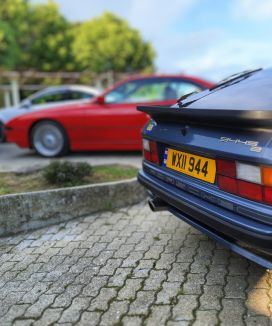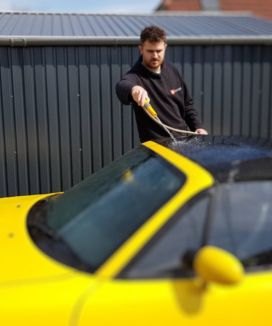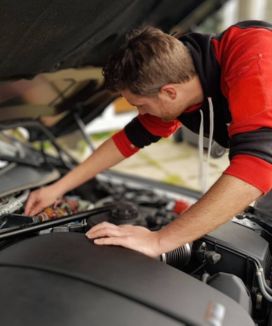Owning a Classic Car Without a Garage (Can It Be Done?)
Table of Contents
Many classic car enthusiasts find themselves on a tight budget when it comes to buying a car. That’s fine, there are plenty of affordable classics on the market. But one potential cost of ownership that’s often not thought about in the first instance is storage.
As with owning any luxury vehicle, keeping a classic car indoors is desirable to maintain its longevity, but plenty of people don’t have the pleasure of owning their own garage.
So can you keep a classic car without a garage?
You can keep a classic car without a garage, but you will need to find another way to protect it from harmful UV rays, damaging wet weather, and other extreme weather conditions.
We know that many people do own classic cars without having their own garage, but how do you protect your pride and joy without one, and what damage can be caused if you leave your car outside?
Keeping a car outside vs in a garage
It’s always preferable to keep a car in a garage rather than outside. A garage protects a car from the elements, keeps it safe from thieves, and reduces the chance of it being vandalised.
It’s well known that garages are good for cars, but many car owners keep their cars outside regardless of the season.
By keeping a car inside a garage, you ensure that:
- The car is kept warm and dry
- The car’s fluids are kept at a regular temperature
- There’s less chance of it being stolen or damaged
- There’s less risk of rust forming
- The paintwork and interior is protected from fading
- You have a comfortable environment to carry out any work on the car
Whilst some prefer keeping their car garaged, there are some that choose to keep theirs outside even if they do have their own garage. The benefits of keeping a car outside are:
- More convenient to access
- Quicker to get in the car and go
- More space in the garage for storage
- You can show it off to your neighbors!
If you want to look after your car, it’s far better to keep it garaged in the long-run. But keeping it outside occasionally has its merits too.
Do I need to keep my classic car in a garage?
Ideally a classic car should always be kept in a garage when not in use to protect it from the elements and prevent corrosion from forming.
Classic cars are more suited to being kept in garages due to their age. The older a car is, the more likely it is to be damaged by the elements.
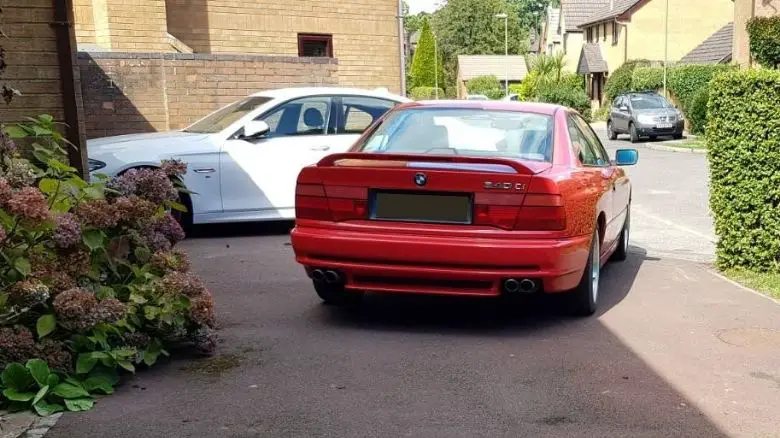
Newer cars have more modern rust-protection, and generally it will take longer for them to start deteriorating if left outside.
Classic cars are usually susceptible to rust, and this is the biggest killer of old cars as it can make them unsafe to drive, and therefore unlikely to pass an annual inspection.
By keeping a classic car garaged, it extends the life of the bodywork and other parts of the car that are prone to corrosion, fading, and other types of deterioration.
We’ve experienced this first hand here at The Car Investor. When we bought our first classic car, a 1996 BMW 840, we initially didn’t have our own garage.
For the first few months of ownership the car had to be left outside on the driveway. This was fine as a temporary solution, but eventually we needed to find a way to protect it. We ended up renting a garage until we could get our own.
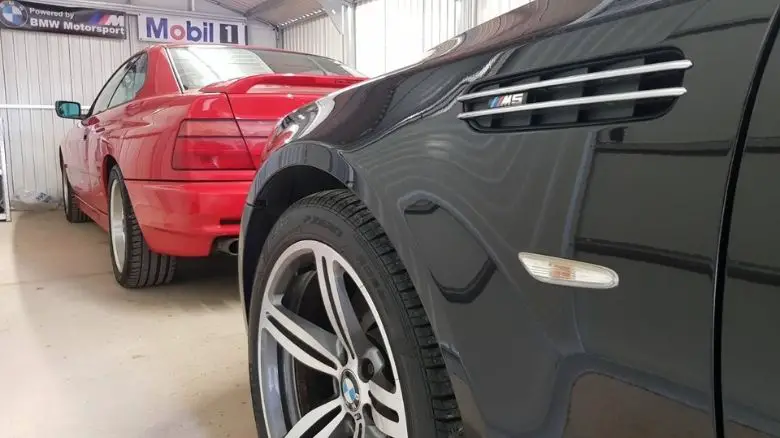
Classic car enthusiasts who live in apartments or in cities where space is at a premium often find themselves facing this dilemma.
It can still make sense to get a classic if you don’t have a garage, but you’ll need to consider other ways to protect it.
How can I protect my classic car without a garage?
If you really have no option to store your classic car in a garage, and don’t have the money to rent a garage or use a professional classic car storage facility, you can use the following methods to protect it as much as possible.
Keep it out of direct sunlight
Sunlight fades the paintwork and car’s interior. Parking it in a shady spot where possible will help to slow that process down.
Wash and wax the car regularly
Even if you’re not driving the car, dirt and grime will quickly build up on the bodywork and in various nooks and crannies when left outside. Regularly clean the car to get rid of the dirt, and apply a layer of wax every now and again to protect it as much as possible.
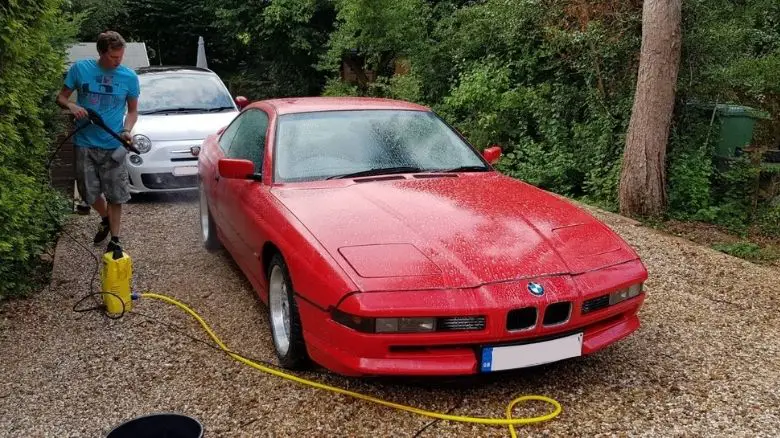
Park away from bushes and trees
Nearby foliage can accelerate the build up of muck on your vehicle, and if you park underneath a tree it can be even worse. Trees deposit leaves and pollen onto your car, and if a bird chooses to nest above your vehicle you’ll have a huge problem. Bird droppings are extremely damaging to a car’s paintwork.
Use a sunshade
If you have no option but to park in the sun, you can reduce the amount of fade that your interior suffers by installing sunshades in your windshield and windows. These reduce the amount of UV rays finding their way inside the car. Tinting the windows can have a similar effect.
Install a carport
If a garage is too expensive, the next step down is a car part. Car ports are open-sided but put a roof over your vehicle. They can be relatively affordable and provide a level of protection against the elements.
Buy a car umbrella
An unusual solution, but one with merit. Car umbrellas attach to the roof of your vehicle with a suction pad, and open out to cover the entirety of your car to offer some protection against the sun, rain, and snow.
Buy a car cover
Car covers are another way of protecting against extreme weather, but do be careful if you’re choosing this option. If you choose a low quality cover that’s not breathable it can actually do more damage than good. Moisture can become trapped underneath, and the wind can cause it to rub against the paintwork. Over time the paintwork may start flaking off, and you’ll have a very expensive repair job on your hands. Thoroughly do your research before choosing this option.
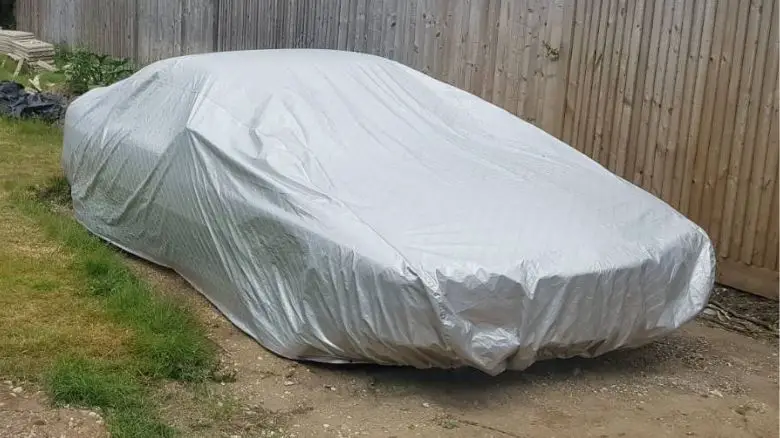
Buy a portable garage or car bubble
These days there are plenty of companies offering portable garages as a solution for classic car storage. These can be foldable ‘perambulator’ style garages, or bubble solutions that claim to offer superior protection.
We highly recommend finding a way to keep your classic car garaged over the winter if you live in a climate that suffers from cold, wet weather.
Even if you don’t have your own garage, you could rent one from a friend, family member, or neighbor. There are also plenty of companies offering professional classic car storage, with temperature and humidity controls in place to offer maximum protection.
Read our full list of classic car storage ideas.
Ultimately these solutions may prove to be expensive over time, but so is letting your classic car deteriorate by leaving it outside. You’ll need to weigh up the costs of both options and decide which is best for you.
ABOUT THE AUTHOR
Adam Chinn writes about the intersecting worlds of classic cars, driving pleasure, and smart investment strategies. Starting his journey at 26, he’s proven that one doesn’t need to be wealthy to begin investing in classic cars.
Adam’s insights have been recognized on platforms such as MoneyInc, Swagger Magazine, and Top Speed.

